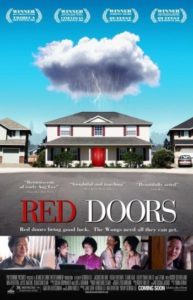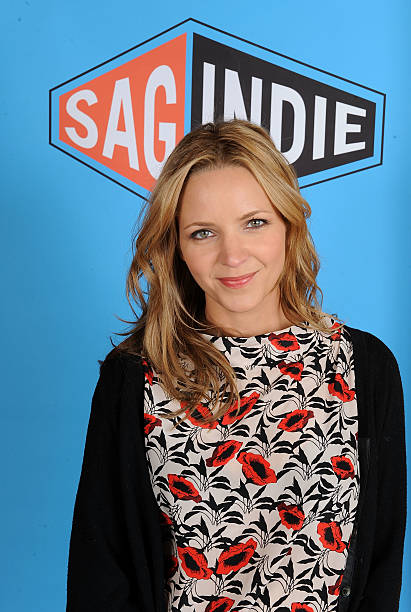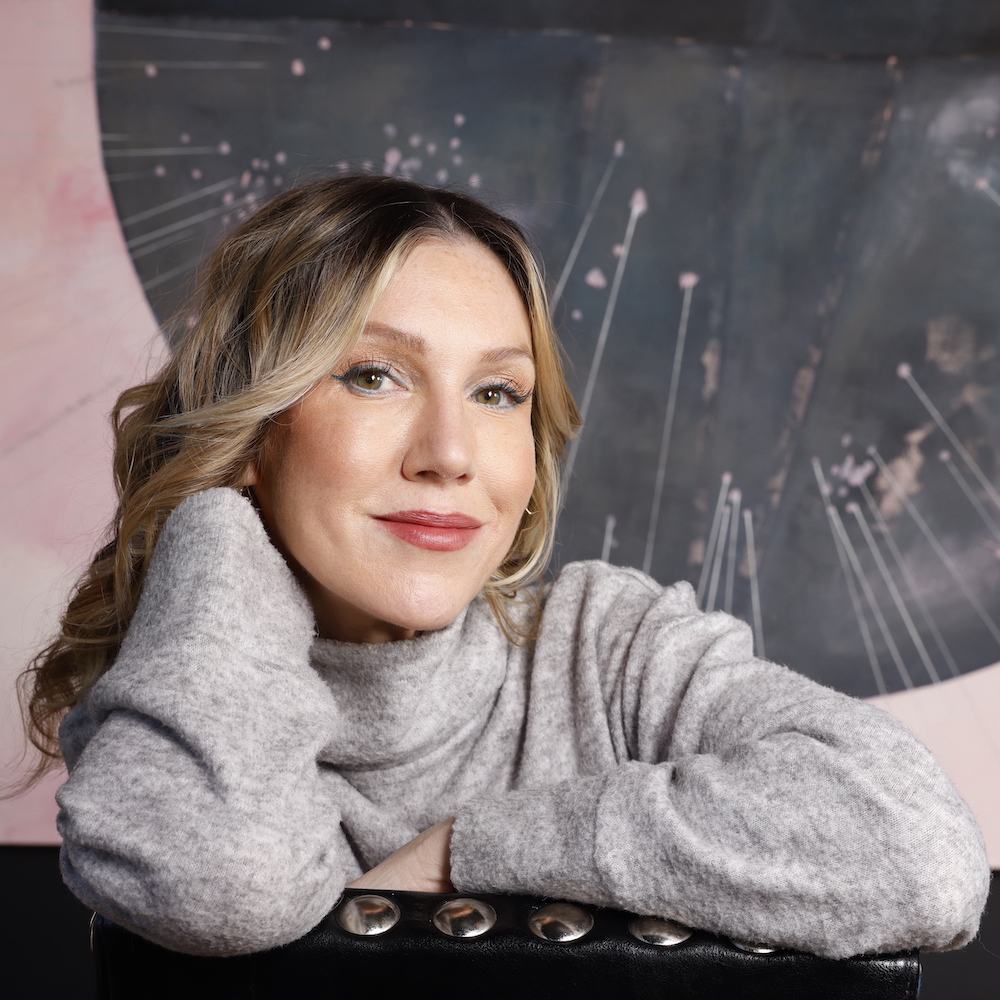Diversity Spotlight: Red Doors Are Open
 This month, SAGIndie puts the focus on RED DOORS, a diversity film that’s tearing up the festival circuit, raking in good reviews, and has nailed down a distribution deal with Warner Bros. Home Video.
This month, SAGIndie puts the focus on RED DOORS, a diversity film that’s tearing up the festival circuit, raking in good reviews, and has nailed down a distribution deal with Warner Bros. Home Video.
We recently talked with actor/producer MIA RIVERTON about wearing two hats on set, chasing down the money for the film, and the importance of diversity film in today’s market.
And speaking of diversity film: if you haven’t already, visit indieBlog to find out how to submit your film for consideration for our brand new Diversity Screening Series!
——
SAGINDIE: Who is Mia Riverton, and how did you become interested in filmmaking?
MIA RIVERTON: I have been a performer since I was very young – singing, dancing, playing piano, and acting professionally on stage and screen. After attending college at Harvard, where I performed with the American Repertory Theater, I started acting full-time in Los Angeles . I became friends with a lot of behind-the-scenes folks – writers, producers, directors, etc. – and realized that in addition to performing in other people’s projects, I really longed to be a part of the creative genesis of my own material as well. In addition, I’ve always been a big film fan – I especially love old movies with strong female characters (Gone With the Wind, Breakfast at Tiffany’s, All About Eve, etc). Those were the movies that inspired me to pursue a career in show business.
Can you talk about how the project was conceived?
MR: I attended Harvard College with Georgia Lee, the writer-director of Red Doors, and the two of us discovered that we shared common backgrounds (we are both the children of Chinese immigrants) and a mutual love of film. After Georgia graduated, she went to work at a consulting firm called McKinsey in New York. She took her summers off to make short films through the NYU intensive film program, and her first short was seen by Martin Scorsese – he was so impressed that he later invited her to apprentice with him on the set of Gangs of New York and mentored her subsequent short films. Even though I moved to LA after graduating, I worked on some of her short films, and we always talked about making a feature film together – I wanted to work with her as a director, and she wanted to work with me as an actress and producer.
In the fall of 2003, Georgia enrolled at Harvard Business School at the insistence of her parents. I convinced her to take a leave of absence after one semester and come make a feature film with me. In January of 2004, she moved to my house in LA, where she wrote Red Doors at my kitchen table. We persuaded our third partner, Jane Chen, to quit her job and come produce the movie with us– Jane was another friend from Harvard who was passionate about film. We raised the $200,000 budget and were in production four months later.
The story of Red Doors is quite autobiographical – the characters are inspired by Georgia’s real friends and family, several of whom play versions of themselves in the film. For example, Georgia’s real-life youngest sister, Kathy Shao-Lin Lee, plays the youngest sister in the movie (“Katie Wong”). The character I play (“Mia Scarlett”) was written specifically for me.
Our goal in making this movie was to tell a “coming-of-age” story about a family that has grown apart and become disconnected, and the journey they take as they stumble along and attempt to reconnect with one another. The fact that the family is Chinese-American is secondary, though it lends the film a lot of rich detail and a sense of cultural specificity.
What was it like producing and acting in this film?
MR: The dual role I played on Red Doors (actor-producer) was both the most challenging and most rewarding experience of my professional life. The challenges primarily arose on set, especially on days when I was working as an actor – the demands of production don’t go away just because you have to be “in character” on a particular day. For example, on one day I found myself having to recast a part at the last minute because an actor dropped out. I was working as an actor that day, so in between takes I was on my cell phone trying to solve our casting problem. It was fairly stressful – I definitely had to learn to compartmentalize and be very disciplined, focused, and flexible as both an actor and a producer.
The rewards of acting in and producing the same project are many. I felt more committed as an actor because I had helped develop the script and my character as a producer – and I also had a deeper relationship with the director and the entire creative team, so the emotional investment was higher. By the same token, as a producer I felt much more committed to seeing the project through as best I could because I knew that the quality of the film would reflect positively on my performance an actor.
How did you secure financing for the film? Was it a tough sell?
MR: We kept the budget small enough that we were able to raise all of the money through private equity – friends and family, and friends of friends and family. It was a tough sell mainly because the three of us had never produced a feature film before, and it was an ensemble dramedy about an Asian-American family – not a horror/action film or a project with big movie star roles. Everyone who invested in the film did so because they believed in our team, our script, and our passion – and they felt that this particular story needed to be told. Many of the investors are part of the Asian-American and/or LGBT communities, both of which are sorely underrepresented in mainstream cinema.
What has the festival circuit been like? Have you enjoyed the experience?
MR: The festival circuit has been a wonderful, once in a lifetime experience. Screening Red Doors to diverse audiences all over the world has opened our eyes to the broader appeal of the film. People from different cities, cultures, ethnic backgrounds, and all walks of life have enjoyed the film and told us they relate to its themes and characters. We never realized that it was such a universal movie until we heard so many different types of festival audiences, juries, and critics praise the film during its festival journey. And, of course, I love to travel to new places – so that was great!
Were your festival wins instrumental in getting distribution for your film?
MR: Our festival wins were key in getting distribution for Red Doors – our first big win was Best Narrative Feature at the Tribeca Film Festival, and we went on to win a prize for Best Ensemble Acting at CineVegas and both the Audience Award and the Grand Jury Prize for Screenwriting at Outfest. Any buzz sets you apart from the multitude of independent films that are made every year, and we were lucky enough to win multiple awards at several different festivals – so I think it made distributors sit up and pay attention to the movie, which is otherwise not an easy sell (again, because it is a story about an Asian-American family and has no movie stars, nudity or explosions).
You guys have garnered much positive critical attention. How important is that to you?
MR: Much like the festival awards we’ve won, our positive reviews have helped us at every stage of the game – they certainly helped generate interest from distributors when we were selling the film, and now that Red Doors has been theatrically released, our reviews help bring in audiences as well. As much as my producing partners and I try not to care personally about reviews, good or bad, we all acknowledge that they are powerful in terms of driving interest in the movie. Roger Ebert saw our film at the Hawaii International Film Festival and gave us a positive plug – that is invaluable to films that might otherwise go unnoticed by the general public.
Do you feel like this is a niche film, or does it have wider appeal?
MR: Red Doors may appear on the surface to be a niche film – an Asian-American film and a queer/LGBT film (because it includes a lesbian storyline). However, as our festival run has shown us, the film actually transcends all lines of race, gender, sexuality, nationality, age, etc. Everyone can relate to the story, because everyone is part of a family, and they recognize and understand those relationships and issues. All of the characters are struggling with challenges that are part of everyone’s human experience – romantic angst, professional dissatisfaction, adolescent rebellion.
As we have screened Red Doors for diverse audiences all over the world, what we’ve discovered is that everyone finds an entry point into the film – whether it’s the character of the father, the teenage daughter, the lesbian sister, etc. – and they get caught up in the family’s story and often forget that they are watching an “Asian-American” film. We’ve had so many people from different backgrounds (a Jewish retiree from Long Island, a young woman from Kazakhstan, an Italian matron, etc.) tell us after seeing the film that they felt we were portraying their families on screen!
What kind of expectations do you have for the film’s box office prospects? Will you make your money back?
MR: We were happily surprised that we were even able to land a theatrical distribution deal, so we didn’t really have any expectations for how well we could do at the box office. We certainly hope to have a successful run in theaters, or at least we hope not to lose money on the theatrical release (which most movies do – both independent and studio films)! If we can last a few weeks in theaters in the major markets and open in a few other cities around the county, we will be very happy. Between our theatrical release, DVD, TV and foreign sales, we are in good shape to make our money back and turn a profit.
Do you think producing is something you will pursue, or is this a one-off deal?
MR: There are many stories I would like to tell, so I definitely plan to produce more film and television projects, though I will need to balance that carefully with my career as an actor (and, more recently, a writer and singer-songwriter). It takes an unbelievable amount of work to produce a feature film, so I will only commit to projects about which I am truly passionate.
This film features a very diverse cast. How important is to you that there are films that tell many different stories, the kind of stories that Hollywood may overlook?
MR: My raison d’etre, as far as my professional life is concerned, is to be involved in projects and help give a voice to the stories that Hollywood usually overlooks – unique, inspiring, perhaps socially conscious stories with diverse casts and interesting perspectives. The kind of storytelling that interests me tends to come from the margins, especially from the independent film world, and I plan to continue being involved with these types of projects by acting in them, writing them, producing them, or just supporting them.
What’s next for you guys?
MR: Georgia, Jane, and I will likely produce our second feature together next year through our production company, Blanc de Chine Entertainment. Meanwhile, I am producing another feature called Broken Heart written by and to be directed by two other SAG members – I love working with other multi-hyphenates! In addition, I have written a screenplay and am working on a second, and I continue to seek out roles that interest me as an actor (I will be working on another indie film in early 2007). I’m also a singer-songwriter, and I plan to record an album over the next few months.
Open mic time: Is there something you would like to say to our readers?
MR: Go see Red Doors in theaters! It is a film about finding and following your passion, something to which we can all relate – it is funny, touching, and thoroughly entertaining. You can find all of the information on our website, reddoorsthemovie.com.

__
Thanks to Mia for discussing RED DOORS.



